The Bill of Rights is the first 10 amendments to the U.S. Constitution. These amendments guarantee essential rights and civil liberties, such as the freedom of religion, the right to free speech, the right to bear arms, trial by jury, and more, as well as reserving rights to the people and the states. After the Constitutional Convention, the absence of a bill of rights emerged as a central part of the ratification debates. Anti-Federalists, who opposed ratification, pointed to the missing bill of rights as a fatal flaw. Several states ratified the Constitution on the condition that a bill of rights be promptly added. Pop over to the National Constitution Center’s learning module to discover more!
Documents and Debates in American History and Government – Vol. 1, 1493-1865
The Core Documents Collection – Documents and Debates is structured around a series of topics, each based on a question for debate. For each topic, there is a collection of documents that, together, form the basis of argument over that topic – from those who debated it at a given point in American history. Volume One covers 1493-1865, and Volume Two covers 1865-2009.
The goal is to explore a series of critical moments in American history by asking questions for which there are not simple yes/no answers, but instead call for informed discussion and rational debate. The Documents and Debates readers also include appendices of additional documents, and together are a perfect fit for any American History survey course, including AP U.S. History.
Celebrate Constitution Day By Exploring the 1787 Constitutional Convention Debates
Over the last several months, ConSource has detailed on our Blog the key debates that occurred during the Constitutional Convention in Philadelphia from May 25, 1787 to September 17, 1787. We hope you will join us in re-exploring the Constitutional Convention debates in honor of Constitution Day on September 17!
Grade 3-5 Passing the Constitution, A Lesson in State Ratification
The purpose of this lesson is to introduce students to the ratification period that followed the Federal Constitutional Convention in Philadelphia. Through various activities to understand the what, why, who, where, and when of state ratification debates, students will see that state ratification of the Constitution was a critical element of establishing the new government’s legitimacy. Student activities throughout the day will help to build a State Ratification Bulletin Board.
George Washington and Ratification
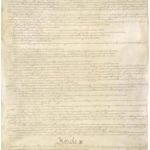
This short video suggests that George Washington’s vision for an American empire was intimately connected to his desire for constitutional ratification. Though he played no public role in the ratification debates, he was in constant contact with the Federalist supporters of the Constitution. As Professor W.B. Allen points out, Washington was aware of all the debates, but his influence was completely invisible to the public.
The Printers’ Role in Constitutional Ratification
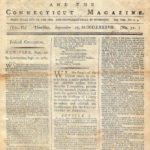
This short video examines the role played by America’s newspaper printers in the ratification debates. Over 80% of all papers supported the new Constitution and played a significant role in supporting the Federalist cause. Professor John Kaminski explains how and why the newspapers helped to drive the ratification debates.
Women Participate in the Ratification Debate

This short video assesses the role of “female politicians”: women who were interested in discussing the ratification politics and processes. The most visible of these was Mercy Otis Warren who, writing as “a Columbian Patriot,” opposed many aspects of the Constitution as undermining liberty. Professor Rosemarie Zagarri notes that many women throughout the country were thinking, talking, and reading about the ratification debates.
Key Individuals in Constitutional Ratification
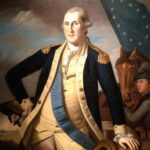
This short video offers insights as to who were the most significant individuals in the ratification debates. Each state had its standouts: John Hancock in Massachusetts, Melancton Smith and Alexander Hamilton in New York; James Madison in Virginia. However, Professor John Kaminski concludes that George Washington, despite his reservations about becoming involved in the debate, was the most influential figure in securing ratification of the Constitution.
Popular Sovereignty and Constitutional Ratification
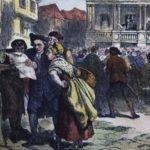
This short video highlights the importance of popular sovereignty in the ratification debates. The people themselves, through their elected delegates in specially-called conventions, voted up or down on the new Constitution. Professor John Kaminksi notes how the Antifederalists also used the principle of popular sovereignty to justify their call for constitutional amendments.
Ratifying the Constitution
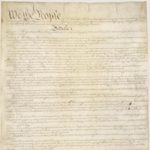
This lesson introduces students to the vigorous debates between the Federalist and the Anti-Federalists surrounding the ratification of the Constitution that took place in the state conventions.
In the state ratification conventions, delegates argued the wisdom of adopting the Constitution. Elected specifically to serve in these conventions, they came from a range of backgrounds, from the very elite and highly educated, to those of humbler birth and station. State delegates grappled with questions about the nature of democracy, the distribution of wealth and power in society, the rights of individuals and minority groups, and the role of dissent in a republic.